A
Auto Express
Guest
Verdict
In MPV form, the original Berlingo notched up 50,000 sales for its maker in the UK, for the decade that it was on sale; globally more than a million were sold, which exceeded the number of van editions bought. The Mk2 Berlingo built on that success with more interior space, a higher-quality cabin and more clever design features. It focuses almost exclusively on practicality and versatility, with little in the way of luxury or performance, but the Berlingo is also very comfortable thanks to its soft suspension set-up and high-profile tyres. While running costs are also low, the Berlingo was built down to a price, which means reliability can be an issue. But many owners have enjoyed years of trouble-free motoring and, if you buy well, the Berlingo should be an easy car to love.
Claims that MPVs were nothing more than vans with windows didn’t worry Citroen when it launched its original Berlingo in 1998, playing on the fact this boxy peoplecarrier was derived from a van in order to offer as much practicality as possible. Being based on a van meant immense practicality for relatively little outlay, while with no sporting pretensions, owners also loved the comfort offered by their Berlingos. The second-generation model we’re covering here may not actually have been based on a van, but it still offers the same qualities and is easy to love, as long as you approach ownership with your eyes open.
Models covered
The Mk2 Berlingo arrived in July 2008, based on the C4 Picasso platform and with a choice of 1.6-litre petrol (89bhp, 109bhp) or 1.6 HDi diesel (74bhp, 89bhp) engines; a 109bhp 1.6 HDi arrived in September 2008. A year later the £800 seven-seat Family Pack became optional on VTR-spec models with the 109bhp 1.6i and 89bhp 1.6 HDi engines. A facelift in April 2012 brought cosmetic changes, and the 109bhp 1.6 HDi was boosted to 114bhp, while the 89bhp 1.6 HDi engine became available with Citroen’s EGS6 automatic transmission. Updates in spring 2015 brought new Touch, Feel and XTR trims, the availability of front parking sensors, a reversing camera and auto-emergency braking. A new touchscreen system was included, while the engines were revamped to become cleaner BlueHDi units, and a PureTech 1.2-litre petrol was introduced.
The 1.6 VTi petrol engine is lacklustre; the 1.6 HDi diesels are much perkier, more frugal and far more plentiful. We’d take the manual gearbox every time, because the EGS6 automated manual isn’t very nice to use.
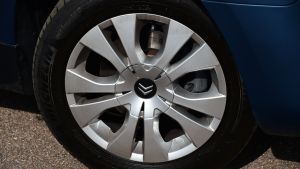
image
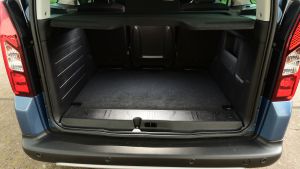
image
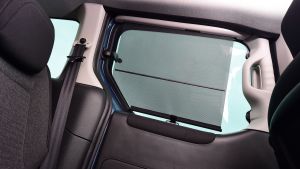
image
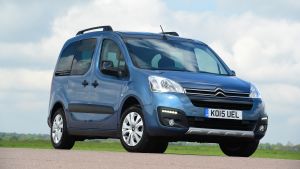
image
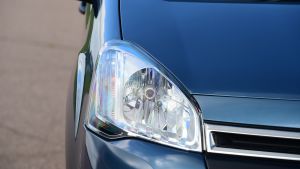
image
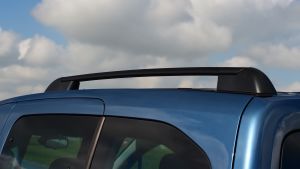
image
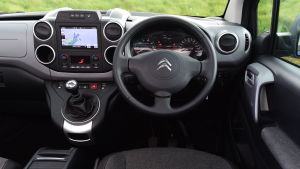
image
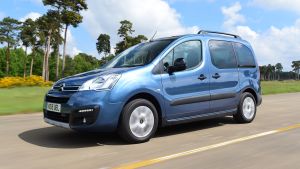
image
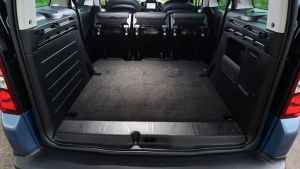
image
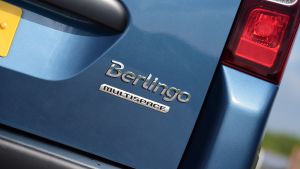
image
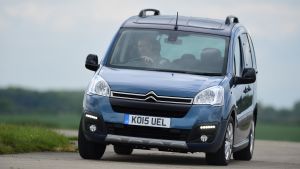
image
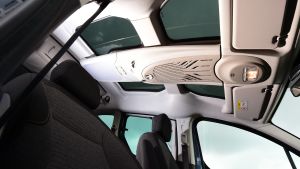
image
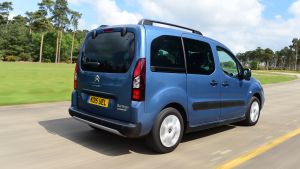
image
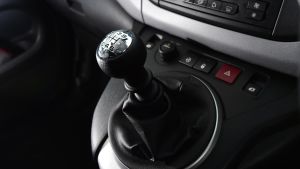
image

image
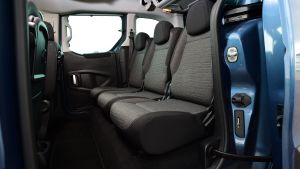
image
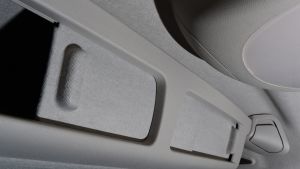
image
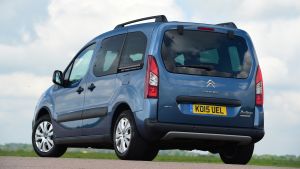
image
The entry-level Berlingo VT has everything that you need: standard kit includes a CD and tuner, remote central locking, electric front windows, plus heated and poweradjustable mirrors. It has steel wheels, just like the VTR, which gets a height-adjustable driver’s seat, along with body-coloured door handles, bumpers and door mirrors. The range-topping XTR has standard air-con and alloys. It also gets raised suspension, underbody protection, flip-up tables for the middle row, plus three individual seats for row two, which can be tilted, folded or removed.
f you’re buying an older Berlingo you might also consider a Renault Kangoo, but UK sales stopped in 2012. The Peugeot Partner Tepee is closely related to the Berlingo, and shares most of the Citroen’s characteristics, while prices and availability are similar. The Fiat Doblo is even more spacious than the Berlingo, but there aren’t many to choose from. You could consider the more conventional Citroen Grand C4 SpaceTourer; it’s more refined, better equipped and nicer to drive, but nothing like as roomy, with a maximum boot volume of 2,181 litres.
Suspension
Early cars have been known to suffer from rattling front suspension. Redesigned top damper mounts should fix things.
Codenames
The original Berlingo was codenamed M49 by Citroen. The second generation is the B9, while the Mk3 is known as the K9.
Tyres
Uneven or accelerated rear tyre wear is a known problem on the Berlingo if the rear axle has been knocked out of alignment.
If you want space, the Berlingo has plenty of it. Even with the back seats in place, the boot holds 675 litres; fold them down and you’ve got 3,000 litres. Things feel even more spacious with the optional four-window skylight, and there are storage solutions throughout. The cabin looks basic, with some cheap materials, but there’s lots of room for five adults, or seven if the Family Pack is specified.
Berlingos have to be serviced annually. There’s a 16,000-mile cap on 1.6 diesel and 1.2-litre petrol cars; 1.6-litre petrols are capped at 20,000 miles. The schedule is minor/major checks at £179 and £299. Change the brake fluid every two years (£59), and coolant every 10 years, with a 112,000-mile cap for 1.2 petrol and 1.6 diesels, and a 120,000-mile cap for the 1.6 petrol. The 1.6 petrol has no cambelt; other cars need the belt changing every 10 years or 112,000 miles (£399-£499).
The Berlingo was recalled 18 times between July 2007 and April 2019. Issues included faulty electrics and seatbelts, the front passenger seat breaking free in an impact, faulty spare wheel heatshields, rear shock absorbers working loose, collapsing tailgates, faulty airbags, the roof separating from the main structure, fuel leaks, the bonnet failing to stay latched shut and faulty gearboxes.
The Berlingo has never featured in our Driver Power used car surveys and last appeared in our new car polls in 2016, when it came 127th out of 150 entries. The boxy Citroen’s best rating was 18th for practicality; the only other scores inside the top 100 were for reliability (87th) and running costs (78th). Last place for ease of driving was poor, and so was 142nd for build quality.
Continue reading...
In MPV form, the original Berlingo notched up 50,000 sales for its maker in the UK, for the decade that it was on sale; globally more than a million were sold, which exceeded the number of van editions bought. The Mk2 Berlingo built on that success with more interior space, a higher-quality cabin and more clever design features. It focuses almost exclusively on practicality and versatility, with little in the way of luxury or performance, but the Berlingo is also very comfortable thanks to its soft suspension set-up and high-profile tyres. While running costs are also low, the Berlingo was built down to a price, which means reliability can be an issue. But many owners have enjoyed years of trouble-free motoring and, if you buy well, the Berlingo should be an easy car to love.
Claims that MPVs were nothing more than vans with windows didn’t worry Citroen when it launched its original Berlingo in 1998, playing on the fact this boxy peoplecarrier was derived from a van in order to offer as much practicality as possible. Being based on a van meant immense practicality for relatively little outlay, while with no sporting pretensions, owners also loved the comfort offered by their Berlingos. The second-generation model we’re covering here may not actually have been based on a van, but it still offers the same qualities and is easy to love, as long as you approach ownership with your eyes open.
Models covered
- Citroen Berlingo Mk2 (2015-2018) - Van-based MPV is a great practical people carrier, providing you get a good one
History
The Mk2 Berlingo arrived in July 2008, based on the C4 Picasso platform and with a choice of 1.6-litre petrol (89bhp, 109bhp) or 1.6 HDi diesel (74bhp, 89bhp) engines; a 109bhp 1.6 HDi arrived in September 2008. A year later the £800 seven-seat Family Pack became optional on VTR-spec models with the 109bhp 1.6i and 89bhp 1.6 HDi engines. A facelift in April 2012 brought cosmetic changes, and the 109bhp 1.6 HDi was boosted to 114bhp, while the 89bhp 1.6 HDi engine became available with Citroen’s EGS6 automatic transmission. Updates in spring 2015 brought new Touch, Feel and XTR trims, the availability of front parking sensors, a reversing camera and auto-emergency braking. A new touchscreen system was included, while the engines were revamped to become cleaner BlueHDi units, and a PureTech 1.2-litre petrol was introduced.
Which one?
The 1.6 VTi petrol engine is lacklustre; the 1.6 HDi diesels are much perkier, more frugal and far more plentiful. We’d take the manual gearbox every time, because the EGS6 automated manual isn’t very nice to use.

image

image

image

image

image

image

image

image

image

image

image

image

image

image

image

image

image

image
The entry-level Berlingo VT has everything that you need: standard kit includes a CD and tuner, remote central locking, electric front windows, plus heated and poweradjustable mirrors. It has steel wheels, just like the VTR, which gets a height-adjustable driver’s seat, along with body-coloured door handles, bumpers and door mirrors. The range-topping XTR has standard air-con and alloys. It also gets raised suspension, underbody protection, flip-up tables for the middle row, plus three individual seats for row two, which can be tilted, folded or removed.
Alternatives to Citroen Berlingo
f you’re buying an older Berlingo you might also consider a Renault Kangoo, but UK sales stopped in 2012. The Peugeot Partner Tepee is closely related to the Berlingo, and shares most of the Citroen’s characteristics, while prices and availability are similar. The Fiat Doblo is even more spacious than the Berlingo, but there aren’t many to choose from. You could consider the more conventional Citroen Grand C4 SpaceTourer; it’s more refined, better equipped and nicer to drive, but nothing like as roomy, with a maximum boot volume of 2,181 litres.
What to look for...
Suspension
Early cars have been known to suffer from rattling front suspension. Redesigned top damper mounts should fix things.
Codenames
The original Berlingo was codenamed M49 by Citroen. The second generation is the B9, while the Mk3 is known as the K9.
Tyres
Uneven or accelerated rear tyre wear is a known problem on the Berlingo if the rear axle has been knocked out of alignment.
Interior
If you want space, the Berlingo has plenty of it. Even with the back seats in place, the boot holds 675 litres; fold them down and you’ve got 3,000 litres. Things feel even more spacious with the optional four-window skylight, and there are storage solutions throughout. The cabin looks basic, with some cheap materials, but there’s lots of room for five adults, or seven if the Family Pack is specified.
Running costs
Berlingos have to be serviced annually. There’s a 16,000-mile cap on 1.6 diesel and 1.2-litre petrol cars; 1.6-litre petrols are capped at 20,000 miles. The schedule is minor/major checks at £179 and £299. Change the brake fluid every two years (£59), and coolant every 10 years, with a 112,000-mile cap for 1.2 petrol and 1.6 diesels, and a 120,000-mile cap for the 1.6 petrol. The 1.6 petrol has no cambelt; other cars need the belt changing every 10 years or 112,000 miles (£399-£499).
Recalls
The Berlingo was recalled 18 times between July 2007 and April 2019. Issues included faulty electrics and seatbelts, the front passenger seat breaking free in an impact, faulty spare wheel heatshields, rear shock absorbers working loose, collapsing tailgates, faulty airbags, the roof separating from the main structure, fuel leaks, the bonnet failing to stay latched shut and faulty gearboxes.
Driver Power owner satisfaction
The Berlingo has never featured in our Driver Power used car surveys and last appeared in our new car polls in 2016, when it came 127th out of 150 entries. The boxy Citroen’s best rating was 18th for practicality; the only other scores inside the top 100 were for reliability (87th) and running costs (78th). Last place for ease of driving was poor, and so was 142nd for build quality.
Continue reading...
